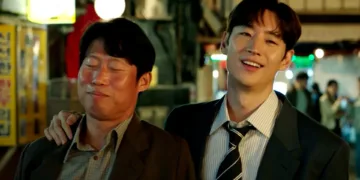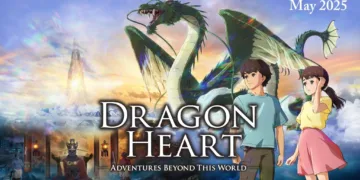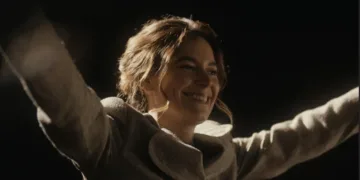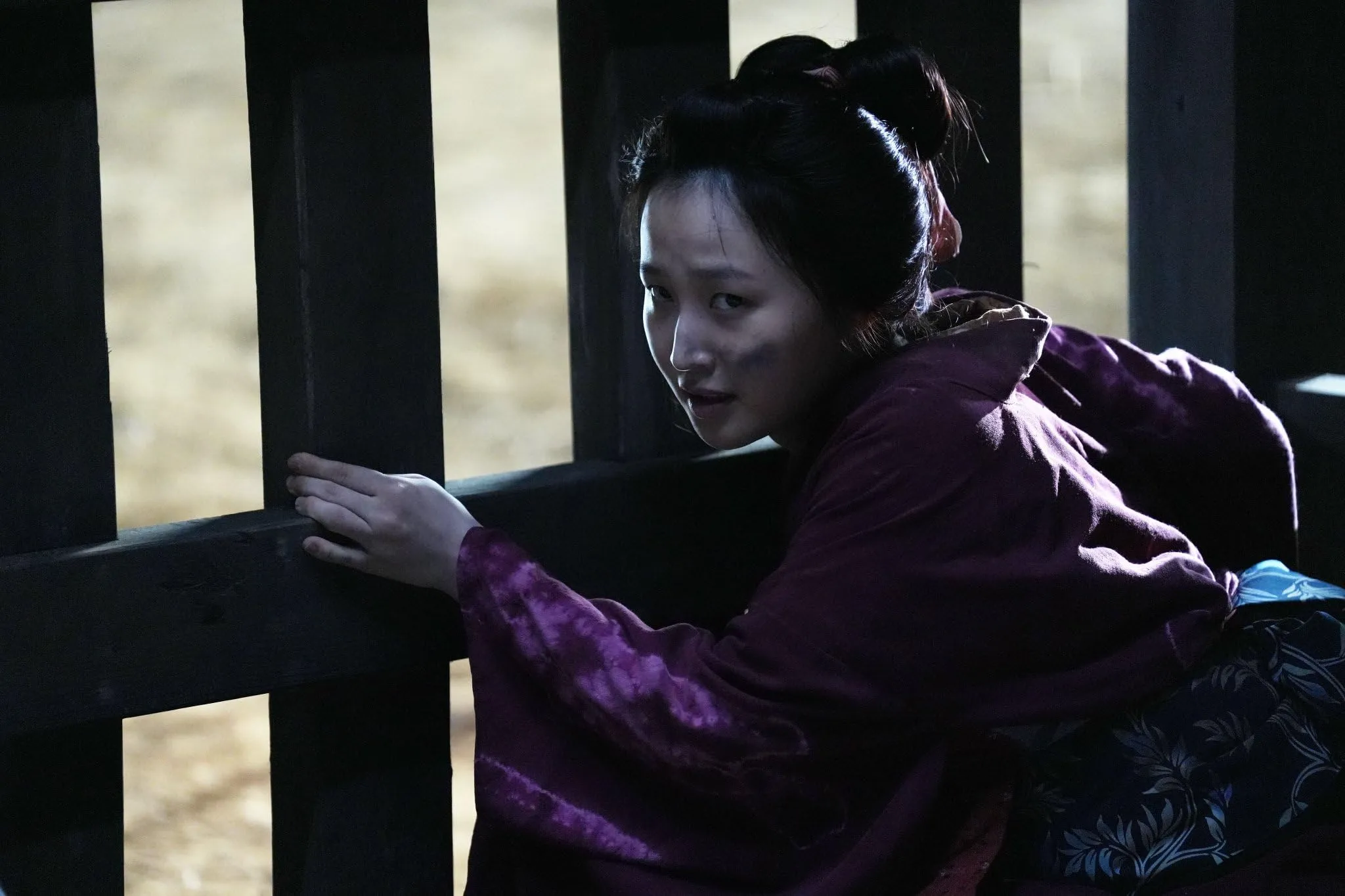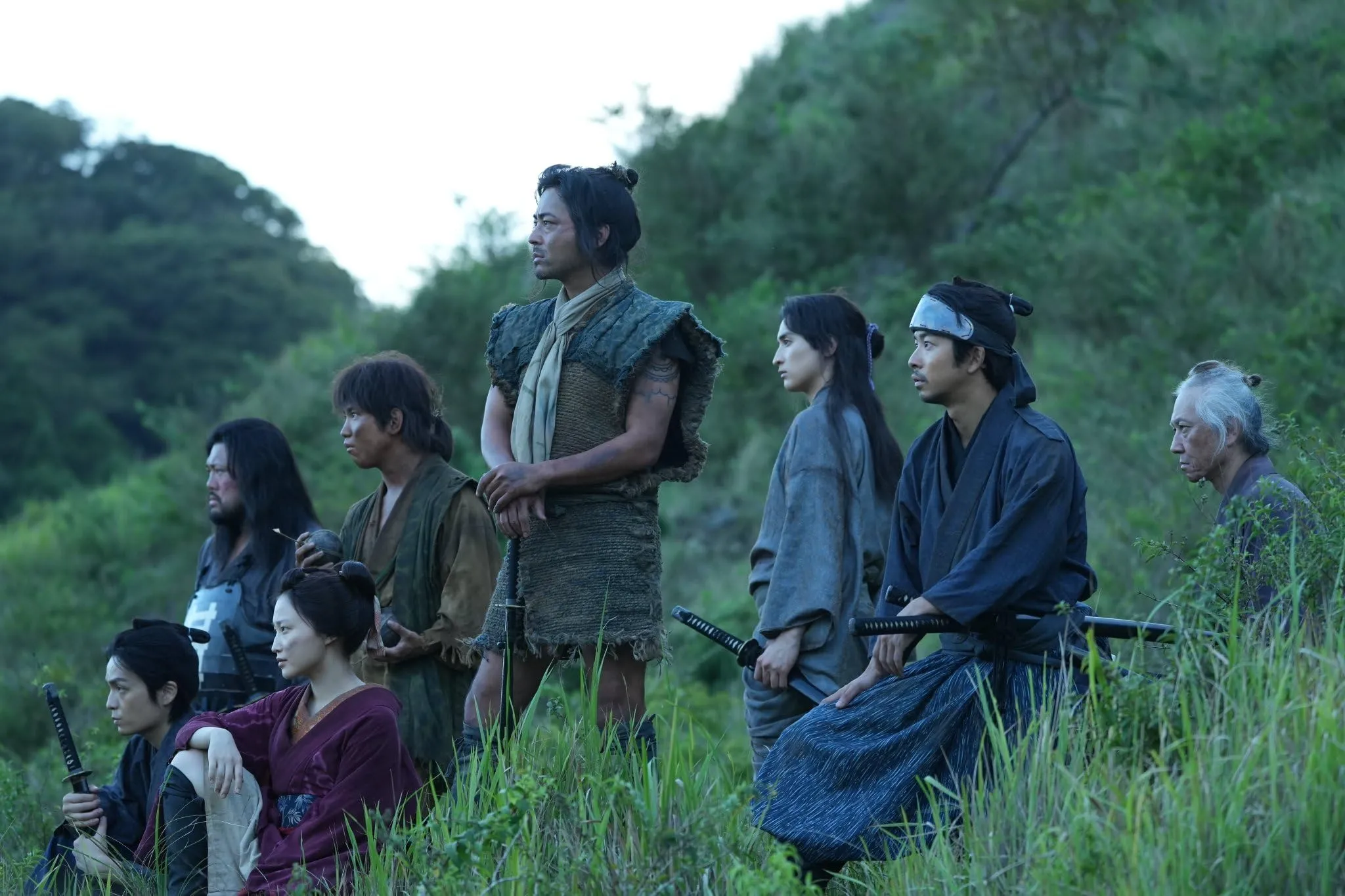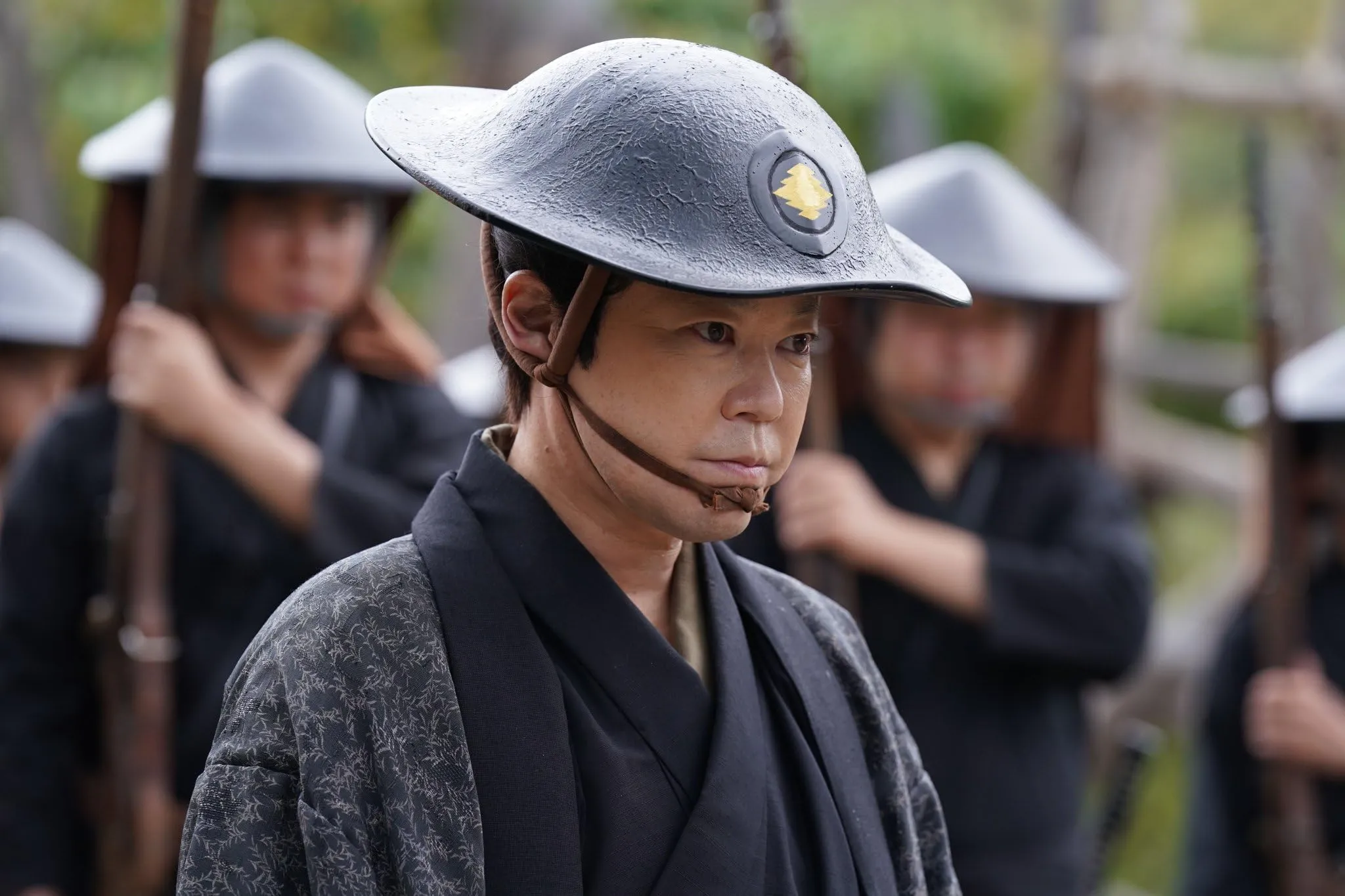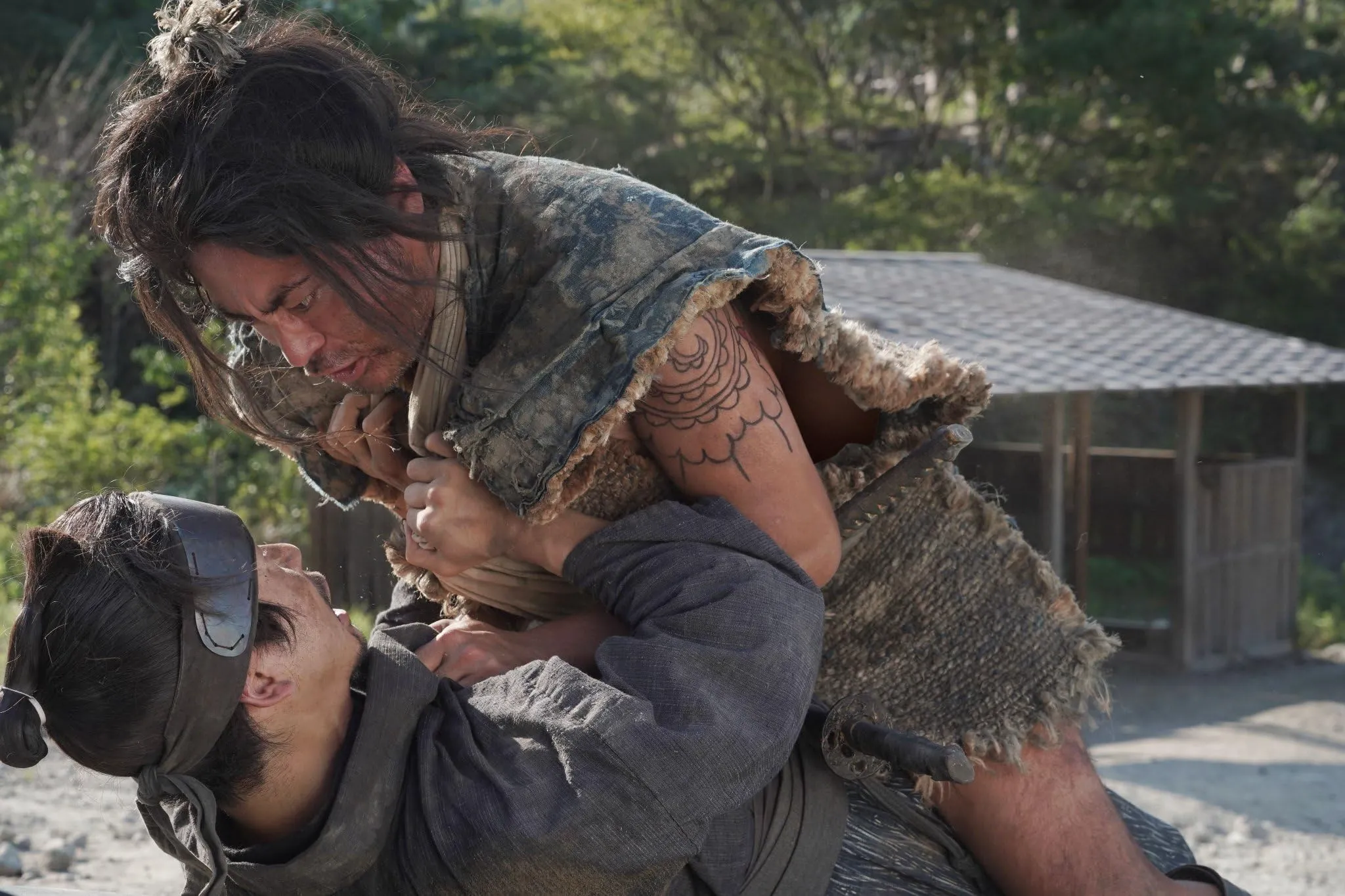Kazuya Shiraishi’s “11 Rebels” emerges as a vivid tapestry made from the rough threads of Japan’s Boshin War, a conflict that marked the end of the samurai era. The film is set in 1868 and follows a group of prisoners, each with a shady past, who are sent on a desperate mission to protect a key fort from the coming New Imperial Army.
This premise, steeped in historical significance, is an action-packed narrative and a reflection on the themes of redemption, loyalty, and the changing tides of honor. When it premiered at the Tokyo Film Festival, “11 Rebels” was a bold return to traditional samurai movies, giving viewers a powerful mix of intense battles and complex political maneuvering.
The screenplay further enriches the film’s narrative, a long-lost masterpiece written by the late Kazuo Kasahara in 1964. Kasahara’s work, which was initially put on hold because of creative disagreements, is a powerful reminder of the circular nature of cultural expression. Because of his work with the yakuza genre, “11 Rebels” has a gritty reality that goes beyond action.
The new version, directed by Junya Ikegami, combines modern filmmaking styles with the weight of historical context, allowing the film to resonate with modern viewers while honoring its roots. In bringing back this screenplay, Shiraishi not only brings back an important part of film history but also encourages a reexamination of the samurai way of life in the middle of the chaos of a Japan that is quickly becoming more modern. Here, the violence is not just for show; it is a commentary on the nature of loyalty and the moral difficulties of a time when the distinctions between loyalty and betrayal are hazy.
The Echoes of Conflict: Understanding the Boshin War
The Boshin War, a crucial conflict that lasted from 1868 to 1869, encapsulates a watershed moment in Japanese history, signaling the end of hundreds of years of feudal rule and the beginning of imperial rule. This civil war between those who supported the Tokugawa shogunate and those who supported the imperial court represents a power struggle and a significant change in Japan’s culture and politics. The war’s violent battles and strategic moves serve as the story backdrop for “11 Rebels,” and the chaotic resonance of history emphasizes the film’s narrative.
Beyond the battlefield, this conflict portends the end of the feudal system, which ruled society for so long. When the imperial troops moved forward, they questioned the samurai’s identity, which made them rethink loyalty, honor, and the point of war.
Through its portrayal of a diverse group of prisoners who, as they face death, struggle with their ideas of redemption and honor, “11 Rebels” skillfully reflects these historical themes. Each character represents the broken ideals of the samurai code. They show how a society in chaos makes loyalty rules harder to follow because people are trying to protect themselves more and more.
In addition to enhancing the story, the film’s setting in this unstable backdrop encourages viewers to think about the bigger effects of such a change. The desperate prisoners’ fight for survival shows how the ideals of the past clash violently with the unstoppable march of progress in a country about to start over. Thus, “11 Rebels” goes beyond being a simple historical drama and becomes a powerful commentary on how traditional values fall apart when faced with the relentless progress of modernity.
The Fractured Humanity of “11 Rebels”
The core of “11 Rebels” is a complex interplay of character dynamics that goes beyond simple archetypes, revealing the raw humanity in each character involved in this desperate struggle. Masa, played with palpable intensity by Yamada Takayuki, emerges as the reluctant hero.
He is a worker whose life falls into chaos after he kills the samurai who raped his wife in an act of vengeance. The narrative is propelled by his motivations, steeped in a primal urge for vengeance and to regain his lost honor. This makes him both a tragic figure and a symbol of the samurai ideals’ turbulent change.
Noro, played by Takara Sakumoto, is very different from the others. Her character gives the group a touching depth. At first, Noro is seen as a simple-minded kid, but her surprising resourcefulness and unwavering loyalty to Masa make things more difficult for the group. Even though Masa doesn’t believe in family bonds, his belief in them brings up themes of connection and the search for belonging in the middle of chaos. A commentary on the untapped potential that society frequently ignores can be found in Noro’s journey from perceived weakness to key strength.
The supporting characters, each with their own stories, further enrich the narrative. From the priest who gambled to the handsome man whose good looks made women kill themselves with jealousy, these people whose crimes define them shine a light on a society full of moral uncertainty. It’s both funny and sad to see how different people deal with survival in tough situations because of their quirks and motivations.
The rebels’ group dynamics are tense, revealing the fragility of desperate alliances. As they prepare for the Shibata clan’s impending attack, a deep-seated distrust bubbles, revealing the harsh truth that deception is often indispensable for survival.
As loyalties are tested and relationships fall apart under the weight of impending doom, the rebels’ struggle is not only against their external enemies but also against their inner demons. The nuanced portrayal of internal and external conflict elevates “11 Rebels” from a simple action narrative to a deep look at how people can keep going in the face of impossible odds.
The Quest for Redemption: Themes in “11 Rebels”
The themes of redemption and honor in “11 Rebels” make for a rich tapestry that makes viewers think about the nature of forgiveness in a world torn apart by violence. Each character’s journey is marked by a deep struggle to regain lost honor, a theme that, while rooted in the samurai ethos, resonates strongly with modern issues of morality and integrity.
Masa’s search for revenge turns into a search for redemption as he deals with the weight of his past and the effects of his actions. The film goes beyond just being a show because of this internal conflict. It shows how trauma scars force people to have a fragile sense of honor that goes beyond traditional ideas.
The film also features a sobering portrayal of female victimhood alongside these tales about men. Characters like Natsu, who is jailed for trying to exact revenge for the death of her child, embody the tragic results of a patriarchal society that frequently pushes women to the margins of their own narratives.
The film could go into more detail about the nuances of her character, but her appearance in the ensemble gives us a glimpse into what it was like to be a woman during this troubled time. The way women are portrayed is still pretty basic, making me wonder if their roles are right in a story mostly about the complicated relationships and fights between men.
Noro, the young person with developmental disabilities, adds another layer of commentary on how society sees disability. At first, his character is shown as someone who is on the outside, but over time, he becomes a symbol of surprising power and creativity.
Noro’s portrayal challenges viewers’ ideas about what is possible and what is valuable. His journey brings to light an important truth: true strength often emerges from the most unlikely sources during the chaos of war and the struggle for survival. In this way, “11 Rebels” skillfully criticizes social norms while praising the human spirit’s strength in the face of honor and redemption.
Blood and Aesthetics: The Art of Action in “11 Rebels”
“11 Rebels” immerses viewers in a visceral experience, where action scenes are not just spectacles of violence but also intricately choreographed dances that embody the film’s main theme. The battle scenes have both fast-paced and carefully planned movements that show a mix of traditional samurai and modern movie styles.
As the rebels perform a ballet of swordplay, explosions, and makeshift weapons, crucial moments, like the fort’s climactic defense, resonate with desperation and urgency. The film’s dedication to realism is evident in the blood-splattered choreography, where every clash of swords feels important, echoing the characters’ struggles for survival and redemption.
The special effects enhance this harsh beauty by using realistic effects that ground the film in a palpable reality. There is a symphony of violence that is both shocking and enthralling, with splashes of blood and the crunch of limbs being cut off. The directors of the film made sure that every scene had a strong sense of danger, turning each scene into a narrative device that helped character growth and thematic exploration.
Filmmakers put together a feast for the eyes in “11 Rebels” by combining wide shots of 19th-century Japanese scenery with the tense chaos of battle. Each scene has more emotional weight because of how well the film shows the stark differences between peaceful beauty and violent chaos. As a physical and symbolic battlefield, the fort stands as the last stronghold of feudal loyalty as modernity moves in. Set design is very important.
Action scenes move at just the right speed to match the emotional turns of the narrative. As the story goes on, the fights get faster and slower, showing how the characters feel. Explosive violence breaks up times of reflection, creating a dynamic balance that keeps viewers interested and makes them care more about the characters’ outcomes. The way the action and narrative are put together makes “11 Rebels” more than just an action film; it’s also a deep look at loyalty, honor, and how people can keep going in the face of chaos and danger.
Crafting a Vision: The Production Background of “11 Rebels”
As a director, Kazuya Shiraishi’s ideas for “11 Rebels” come from many of his previous works, which often deal with crime and moral uncertainty. Shiraishi, who is best known for films like “The Blood of Wolves” and “Lesson in Murder,” brings a gritty reality and a deep understanding of character psychology to the samurai genre.
In this new setting, his earlier studies of violence and redemption resonate strongly, allowing him to look at the traditional samurai way of life from a modern perspective. Shiraishi’s skill in balancing visceral action with emotional depth is evident, as he invites viewers to engage with the characters not just as warriors, but as flawed people seeking redemption in a world marked by chaos.
Adapting Kazuo Kasahara’s original screenplay shows how well he and screenwriter Junya Ikegami work together. Ikegami brings new life to a story that has been dormant for decades. Their partnership stresses staying true to the original and a fresh take on it that speaks to current societal problems.
Thanks to this synergy, the film can now resonate with modern viewers while still maintaining the historical significance of the Boshin War. Shiraishi and Ikegami make a timeless and urgent narrative by incorporating contemporary themes of survival and loyalty.
The high production quality in “11 Rebels” shows how much Shiraishi cares about every little thing. As the rough landscapes and traditional buildings serve as a backdrop for the developing drama, filming in real places gives the movie a more authentic feel.
The set design, from the old, rickety fort to the busy town, encapsulates the period while giving the film’s action and emotional scenes a striking visual backdrop. This dedication to quality makes the experience more immersive. It establishes the film in a real-world that encourages reflection on its larger themes while providing the exciting spectacle that fans expect from a contemporary samurai epic.
The Review
11 Rebels
"11 Rebels" skillfully blends intense action with deep themes of redemption, honor, and the fragility of human relationships in the face of chaos. Kazuya Shiraishi's skilled direction, rich narrative, and interesting character dynamics bring the samurai genre back to life. The film's examination of societal values and the human state remains strikingly current, even though the portrayal of female characters could be more in-depth. The stunning visuals and strong performances make the journey through history's shadows more interesting and thought-provoking.
PROS
- characters
- Impressive cinematography and authentic set design enhance immersion.
- Engages with issues of honor, redemption, and societal values.
- Skillfully choreographed battles that blend realism and excitement.
CONS
- Female characters lack depth compared to their male counterparts.
- Some sections may feel uneven between action and narrative development.




























